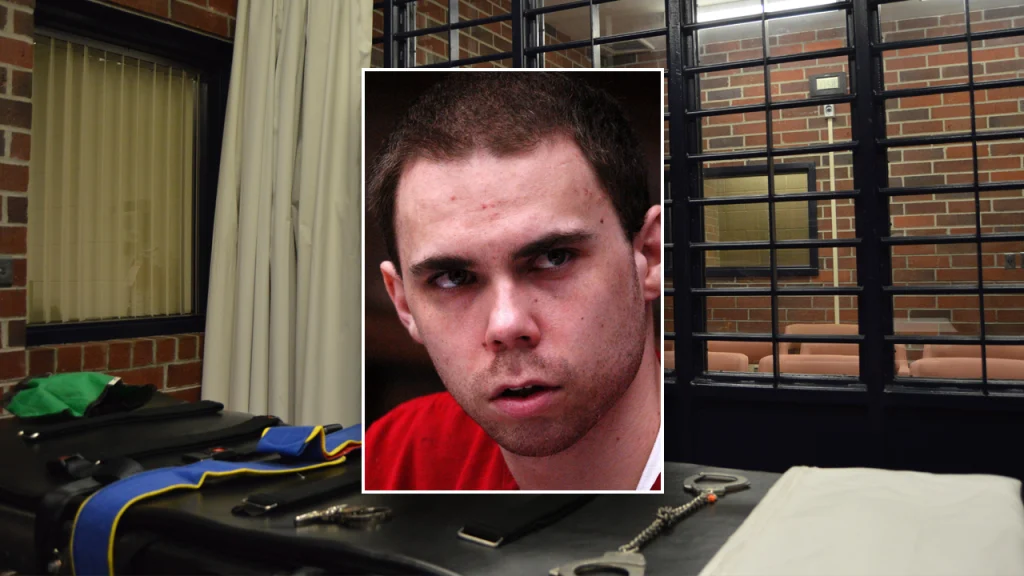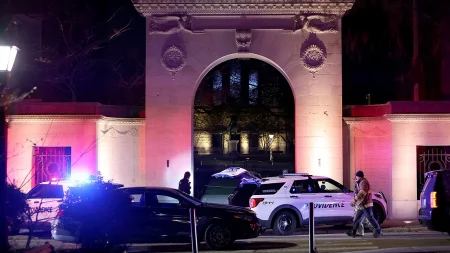Death Row Inmate’s Execution Set for November: A Tale of Violence and Trauma
South Carolina is preparing to execute 44-year-old Stephen Bryant on November 14th, marking the state’s seventh execution since resuming capital punishment last year. Bryant’s case stands out for its particularly gruesome details – he was convicted of killing Willard “TJ” Tietjen in 2004, burning the victim’s eyes with cigarettes, and using Tietjen’s blood to taunt police with the message “victem 4 in 2 weeks. catch me if u can” written on a wall. The state Supreme Court recently issued the death warrant, rejecting his attorneys’ request for a delay due to the federal government shutdown. Bryant will need to choose between lethal injection, firing squad, or electric chair by October 31st, joining the six inmates executed in South Carolina since September 2023.
The details of Bryant’s crime reveal a disturbing pattern of violence. According to court records, Bryant approached Tietjen’s home claiming car trouble before shooting him multiple times. In a chilling detail, candles were arranged around Tietjen’s body afterward. The victim’s daughter, Kimberly Dees, grew concerned after her father didn’t answer multiple phone calls, and on her sixth attempt, a stranger answered. When she demanded to speak with her father, the voice replied, “You can’t, I killed him,” and identified himself as “the prowler.” Prosecutors also linked Bryant to two additional murders, stating he had given rides to men and shot them in the back while they urinated on the side of rural roads in Sumter County that same October.
Bryant’s defense paints a picture of a deeply troubled man whose violent actions stemmed from unresolved childhood trauma. His lawyers described how Bryant had been sexually abused by four male relatives as a child, trauma that resurfaced and tormented him in the months leading up to the killings. According to testimony from his aunt, Terry Caulder, Bryant had desperately sought help, appearing visibly tormented and “like his soul was just laid wide open.” Unable to process his pain through proper channels, Bryant reportedly turned to methamphetamine and even more extreme measures like smoking joints sprayed with bug killer to numb his suffering, creating a tragic cycle that ultimately led to violence.
South Carolina’s recent resumption of executions has not been without controversy. The six inmates executed since last September have all challenged the state’s execution methods as cruel and unusual punishment. Defense attorneys have raised concerns about both the firing squad and lethal injection protocols. In one recent firing squad execution, they claim the three riflemen nearly missed Mikal Mahdi’s heart, reportedly causing him to suffer in agony for three to four times longer than necessary. Similarly, lawyers argue that the state’s current two-dose pentobarbital lethal injection protocol essentially drowns inmates in lung fluid while leaving them paralyzed and unable to express their distress, raising serious ethical questions about the humaneness of these methods.
The resumption of executions in South Carolina follows a 13-year hiatus caused by difficulties obtaining lethal injection drugs. Pharmaceutical companies had grown reluctant to sell these substances to corrections departments out of concern their identities would be disclosed. The state legislature addressed this obstacle by passing a shield law to protect the anonymity of drug suppliers and by adding the firing squad as an execution method. This political solution removed the procedural barriers that had effectively paused capital punishment in the state, though debates about the ethics and constitutionality of execution methods continue. Bryant’s upcoming execution will make him the 50th person put to death in South Carolina since the state reinstated capital punishment in 1985.
In the broader national context, Bryant’s scheduled execution is part of a continuing trend of capital punishment in America. So far this year, 39 men have been executed across the United States, with at least five more executions scheduled before year’s end. While some states have moved away from the death penalty in recent years, others like South Carolina have reaffirmed their commitment to capital punishment by addressing logistical and legal obstacles. As Bryant’s execution date approaches, his case highlights the complex intersection of violent crime, childhood trauma, and America’s ongoing debate about justice, punishment, and the appropriate response to the most heinous offenses. Whether one views his upcoming execution as justice for his victims or as another chapter in a cycle of trauma and violence likely depends on one’s perspective on the purpose and ethics of the death penalty itself.











